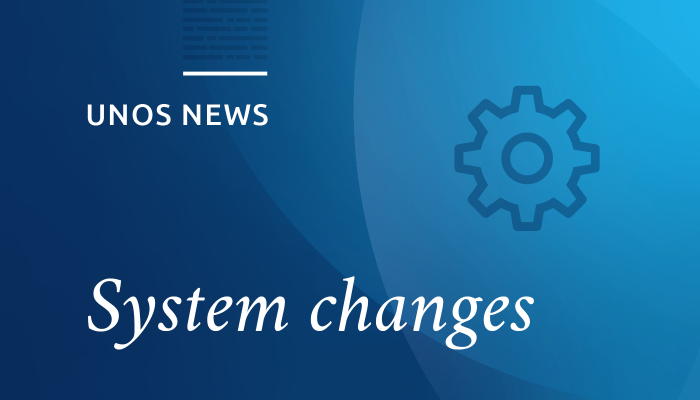James Pittman, AVP of Transplant Services at Hospital Corporation of America (HCA) and a former transplant administrator/coordinator, knows firsthand how challenging it can be to keep a hospital’s kidney waiting list up-to-date, while juggling multiple priorities. Currently, transplant professionals can generate waiting list reports in UNet to help them with this burdensome task, but these reports are not easy to find or use.
“First you have to know that the report even exists and understand how to create it,” said Pittman. “Then in order to use that report as an analytical tool, you need to export it into Excel. Finally, to make it useful, you need to apply filters or build a pivot table within Excel, which is something a lot of frontline clinical folks don’t necessarily know how to do. This process is tedious and time consuming and requires a certain amount of Excel expertise so I’m not sure how many coordinators are actually taking advantage of this resource.”
Pittman helped to create an innovative new tool that is likely to change that. Created using the data visualization software, Tableau, the tool enables busy administrators to simply point and click to uncover detailed information about active and inactive candidates on their waiting list. Relying on the technical expertise of HCA Data Analytics employee Daniel Heacock, Pittman turned his vision into a practical and accessible tool that will help kidney transplant programs across the country manage their waiting list, and ultimately, serve their patients better.
For the last year, Pittman has traveled across the country to share this tool with transplant program staff and to teach them how to use it. “When I went to hospitals to do training sessions, transplant coordinators would literally walk up and give me a hug to thank me for making their life easier. They love this tool!”
Seeing the impact this tool had on HCA-member hospitals, Pittman was anxious to make it available to all transplant programs. He partnered with UNOS, who made a few tweaks, and ultimately made it possible for anyone with UNet access to use the kidney waiting list management tool.
How it works
A kidney transplant wait list in its most ideal state has the patients that should be active as active and likewise the patients that should be inactive as inactive. These classifications do not always reflect reality, however. For example, a candidate may have been changed to an inactive status because of insurance reasons. Later on, the insurance issue may have resolved but they were never changed back to active status. The tool gives leadership and staff a precise visual of the program’s wait list all the way down to the individual patient. The tool quickly informs staff how many of their patients are active, inactive and the different reasons why. It also tells them how long those patients have been inactive. And the visual layout allows administrators to drill down as deeply as they need to by clicking on any individual category.
“By partnering with Sarah Taranto at UNOS and the UNOS team we were able to enhance this tool by adding the Total Allocation Score for kidney transplant candidates. This adds a new level of predictability that was absent in the previous version and helps with managing the active patients on the list.
Other information available at their fingertips includes:
- Who is most likely to get a transplant?
- ABO Type, age, BMI
- Who has the highest PRA?
- Who has the lowest EPTS score?
Where do I find the tool?
- Logon to UNet and select Resources from the main navigation bar.
- Choose Data Services from the dropdown items.
- Choose My Visual Analytics in the left column to find the kidney waiting list management tool and other innovative data reports, like the ROO and Center STAR files.
“It’s really apparent that the availability of this tool will benefit the entire transplant community, and the people that will benefit most are the patients,” said Pittman. “Yet I never would have been able to realize my vision and get this tool in the hands of administrators everywhere without the partnership of UNOS and my HCA colleague Daniel Heacock.
“We know there are patients on lists that that are currently inactive that should be active. By making this tool widely available, busy administrators will be able to quickly and efficiently analyze their existing lists and re-establish contact with particular patients. I’m excited about the possibilities.”

